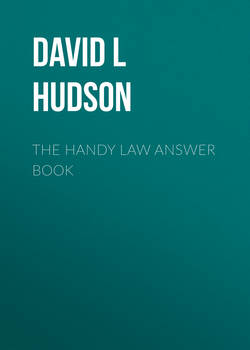Читать книгу The Handy Law Answer Book - David L Hudson - Страница 120
На сайте Литреса книга снята с продажи.
What is plain view?
ОглавлениеThe plain view doctrine provides that if a law enforcement official comes across incriminating evidence that is in his or her plain view, the officer can conduct a search without having to first obtain a warrant. The Supreme Court has reasoned that the object or material must be in plain view of the officer and that the incriminating character of the material must be “immediately apparent.” Also, the law enforcement official must lawfully be in the position from which he or she spots the incriminating material. It used to be the law that the plain view doctrine required that the officer’s discovery of the incriminating material be inadvertent. However, the U.S. Supreme Court rejected that requirement in Horton v. California (1990).
The U.S. Supreme Court has expanded the plain view doctrine to also include the plain feel or plain touch exception to the Fourth Amendment.
